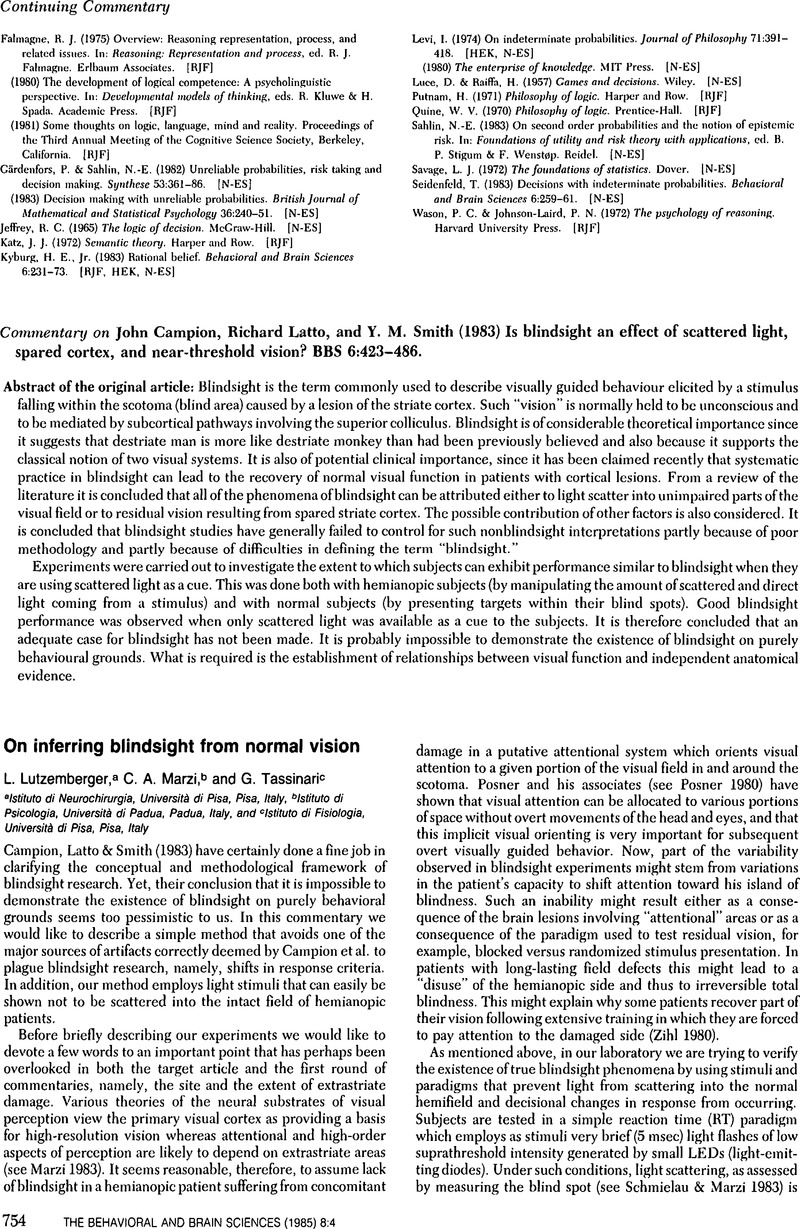Crossref Citations
This article has been cited by the following publications. This list is generated based on data provided by Crossref.
Marzi, C.A.
Tassinari, G.
Aglioti, S.
and
Lutzemberger, L.
1986.
Spatial summation across the vertical meridian in hemianopics: A test of blindsight.
Neuropsychologia,
Vol. 24,
Issue. 6,
p.
749.
Schnitzer, Marc L.
1990.
Critique of linguistic knowledge.
Language & Communication,
Vol. 10,
Issue. 2,
p.
95.
Aleci, Carlo
and
Dutto, Ketty
2024.
Seeing the invisible: theory and evidence of blindsight.
Discover Medicine,
Vol. 1,
Issue. 1,



